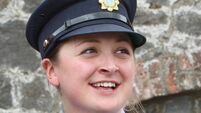Festive cheer the medicine for children
FIRST-time visitors to the children’s ward on floor four of the Mercy University Hospital (MUH) in Cork could be forgiven for thinking they had stumbled upon Santa’s grotto.
From beneath a sea of tinsel and Christmas decorations, nurses at the reception desk extend a warm welcome to anyone who enters through the doors of the 25-bed ward.













